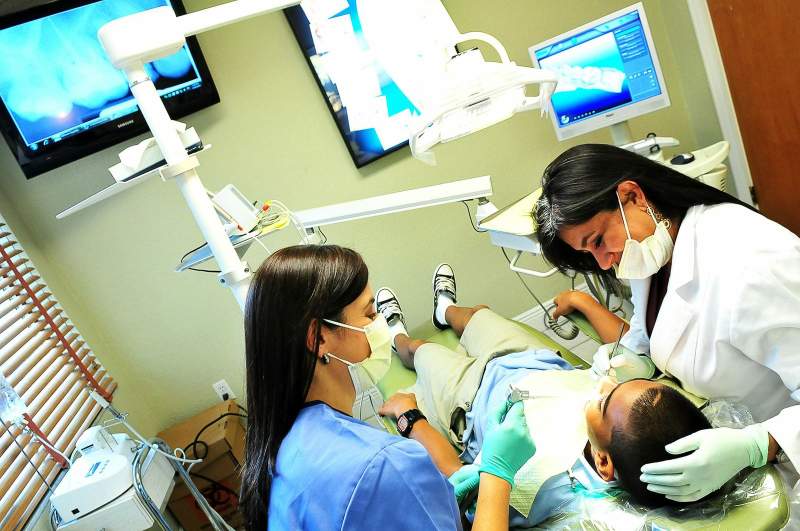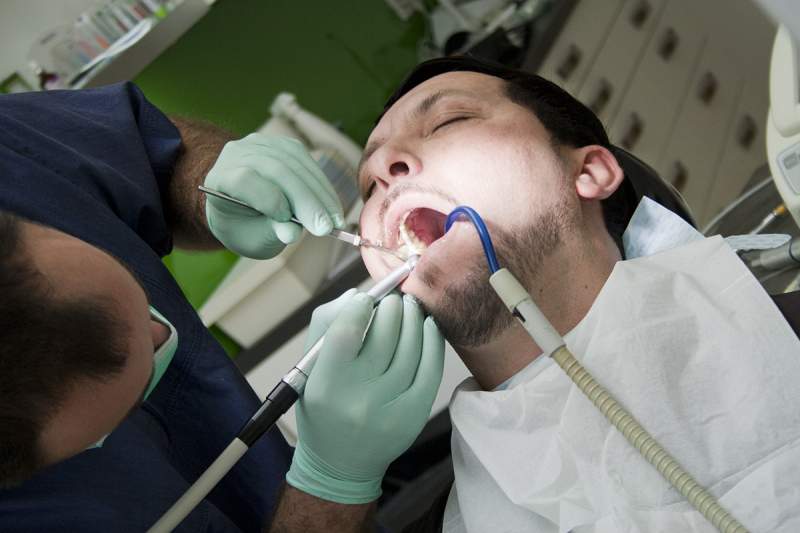The number of people that suffers from dental anxiety is incredibly higher than you can imagine.
People often do not go for their regular dental checkup for the long time as they fear the dentists and dental treatments. Some people even have the phobia of dental procedures.
However, it’s completely fine if you are afraid of going to the dentist. There is nothing to be ashamed of.
Some people refrain from going to the dentist because they fear the needle/shots, have had the bad experiences from the past dental treatments, don’t have enough time or suffer from the anxiety of dentists.
If you avoid going to the dentist for a long time, then you might leave yourself open to many dental problems.
That can even cause your mouth long-lasting damage. But, what if I tell you there is a way to overcome all of this dental problems without worrying about anything.
This is where dental sedation comes in. Sedation dentistry is a particular part of the dental treatment procedure in which to calm the patient or to make them comfortable, and in a relaxed state, a dose of sedatives is given to them.
These sedatives have a direct effect on your nervous system which is responsible for the consciousness.
This particular procedure is primarily for those who have sensitive gums/teeth and suffers from dental anxiety. This procedure is also ideal for those who are having lengthier treatments.
Rather than applying multiple shots of numbing agents, it’s suitable to go for sedation dentistry procedure. It is also advisable for children who become relentless during their regular dental check-up.
Levels of Sedation
Generally, there are three levels of sedation. The factor that decides which one is best suitable for the patient depends upon what kind of treatment they are going to go through.
Minimal Sedation:
 In this procedure, oral medication is provided to a patient before the treatment begins. Minimal sedation is an excellent choice for those who fear sharp objects like needles or people whose heart starts pounding like 300 horsepower engines by the mere glimpse of sharp lab equipment inside the dentist’s clinic.
In this procedure, oral medication is provided to a patient before the treatment begins. Minimal sedation is an excellent choice for those who fear sharp objects like needles or people whose heart starts pounding like 300 horsepower engines by the mere glimpse of sharp lab equipment inside the dentist’s clinic.
This treatment doesn’t make the patient sleep. Instead, they numb their senses so that they have little to no memory of the details like noises, and smells during the procedure.
Kind of sedatives used in minimal sedation procedure are:
- Oral sedatives: This is the most comfortable way to give sedatives. Healthcare provider gives a pill to the patient which makes them feel drowsy during the procedure. A patient can also take the pill in liquid form.
- Nitrous Oxide: Generally known as laughing gas is also an effective and safe way to calm the patient. This sedative agent is mixed with oxygen, and then the patient inhales it via a small inhaling mask that is fit over their nose. This makes them feel relax, and the dentist can easily proceed with their treatment without any hassle.
Moderate Sedation:
 Moderate sedation is a slightly advanced version of minimal sedation. In this procedure, a patient is in an altered state of consciousness.
Moderate sedation is a slightly advanced version of minimal sedation. In this procedure, a patient is in an altered state of consciousness.
The patient is somewhat disassociated with their memory, surroundings, the perception of pain, and anxiety. All of these are significantly reduced during the treatment, and the patient goes in a relaxed or comfortable state.
The person who received moderate sedation thinks they were asleep because they cannot recollect anything that they went through during the treatment.
Kind of sedatives used in moderate sedation procedure are:
- Nitrous Oxide: This is quite a popular sedation technique. Just like minimal sedation, sometimes laughing gas is induced into the patient in moderate sedation as well.
- IV sedation: IV sedation is known as Intravenous sedation. When sedatives are introduced directly into the blood via injection, it is referred to as Intravenous sedation. This technique is also referred to as twilight dentistry or sleep dentistry.
Sleep dentistry isn’t similar to surgical procedures. Unlike the surgical procedure, you are not unconscious here. You are just in an induced profoundly relaxed state. After waking up from this procedure, you won’t feel the pain of the treatment, and it will feel like time hasn’t even passed from the moment you arrived at the dental clinic.
Deep Sedation:
 Deep sedation is given to a patient who is going through the complicated or major surgery and a person who cannot bear the pain of the treatment.
Deep sedation is given to a patient who is going through the complicated or major surgery and a person who cannot bear the pain of the treatment.
It keeps you comfortable and asleep. You won’t even remember anything about the treatment that you just went through.
One important thing to note here is that the patients are not able to breathe properly during the procedure so, they need some assistance to maintain the airway via oxygen mask placed over the mouth and nose, or through tiny tubes that goes through the nostrils.
Deep sedation can be given in the form of a pill, inhale solution, a shot or as an IV injection.
This is quite a composite procedure than the other two. Your healthcare provider will continuously monitor you once you are under deep sedation. You will have enough medicines that will keep you asleep.
Your healthcare provider will monitor your heart rate, blood pressure, and breathing. They will measure your heart’s electrical activity by a heart monitor and the amount of oxygen in your blood by an oximeter.
Kind of sedatives used in deep sedation procedure are:

- General Anesthesia: As discussed earlier, the patient is given enough doses before the treatment begins which makes them asleep and in a relaxed state. This makes the dentist’s job easier, and they will be easily able to carry out the surgery or treatment.
- Topical Anesthesia: In this procedure, the patient loses sensation in the skin, mucous membranes, or in the conjunctiva. Local anesthetics are excruciating which can further increase the needle anxiety and causes tissue edema. Topical anesthesia gets rid of this problem, and this is why it is becoming more and more popular in clinical dentistry. It can be given in the form of ointments, anesthetic solutions, sprays, or gel.
Sedation dentistry has proved to be a blessing for those who suffer from dental anxiety or who refrain from visiting the dentist due to fear of needles or the pain of the treatment.
Well, gone are those days as you don’t have to worry about those painful dental treatments anymore.
Now that you are well aware of sedation dentistry, there is no reason for you to avoid your dental issues.
Otherwise, it will get even worse, and you will end up with a more severe problem.
So, visit your nearest dentist as soon as possible, get rid of your dental ailments, and start spreading happiness with your wonderful smile.
